Your iPhone goes with you pretty much everywhere you go, and unless you have unlimited data on your cellular plan, you've probably connected to dozens of Wi-Fi hotspots over the years. Wi-Fi passwords are saved to your iPhone so you can auto-connect to the router or personal hotspot again, but finding the plain text password for a network hasn't always been easy.
While iOS 15 and older software versions would remember Wi-Fi passwords for all the wireless access points you successfully connected to, there was no obvious way to retrieve a network's unobfuscated password. Your iPhone would let you share a saved hotspot's password to another device attempting to connect to the network in question, but only with other Apple devices.
That all changed with Apple's iOS 16 update. Now it's just as easy to find and reveal plain text passwords for all your saved Wi-Fi networks on your iPhone as it has been on Android for years. The change also appears in iPadOS 16.1 for iPad, which was released on Oct. 24.
- New Method Available: Use iOS 18's New Passwords App to Find, Share, and Manage Wi-Fi Passwords Your iPhone and Other Apple Devices Auto-Saved for You
Option 1: Find Your Saved Wi-Fi Passwords in iOS 16
It's easy to find stored Wi-Fi passwords on your iPhone as long as you're running iOS 16.0 or later. When in the "Wi-Fi" menu in the Settings app, tap the info (i) button next to the Wi-Fi network you're currently on, and you'll see a new "Password" field under the "Auto-Join" toggle.


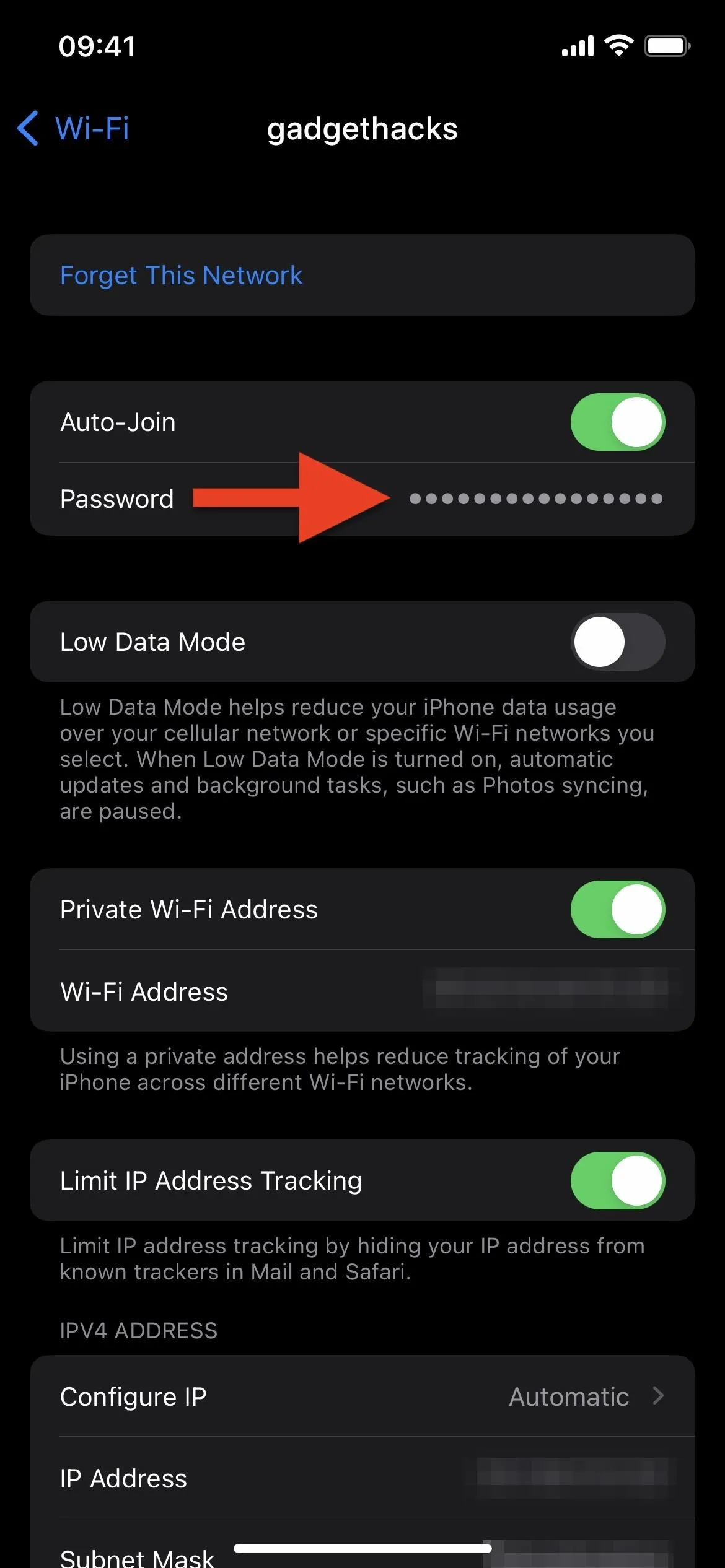



Touch the password dots, and then authenticate yourself using Face ID, Touch ID, or your passcode. Once authenticated, iOS 16 will reveal the plain text password. It will also provide a quick "Copy" option if you want to copy it to your clipboard to paste somewhere else, like in an iMessage.
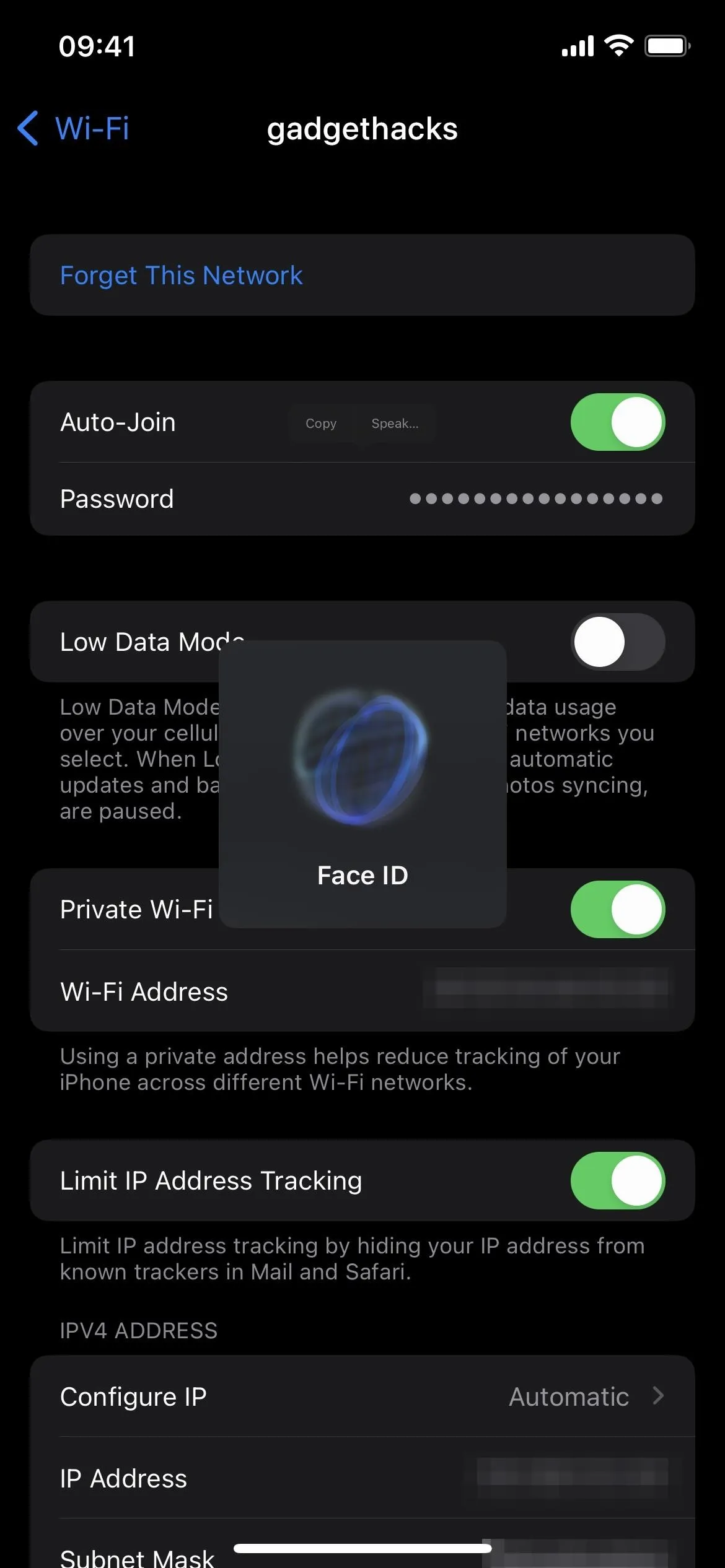



You can do the same thing for any nearby Wi-Fi hotspot in the Networks list that your iPhone or another iCloud-connected Apple device saved. More importantly, you can reveal the passwords for all saved networks, no matter if they're in close proximity or not.
- Full Guide: Major iPhone Update Finally Lets You Manage Past Wi-Fi Networks and Even View Their Passwords
From the Wi-Fi settings, tap the new "Edit" button and authenticate yourself using Face ID, Touch ID, or your passcode. Once authenticated, you'll see a list of Known Networks, which are all of the hotspots you've saved to your iPhone or iCloud Keychain from your other Apple devices. You'll also see Managed Networks, but those are just Wi-Fi networks your cellular carrier uses to help keep the load off its cellular networks.
Tap the info (i) button next to any Wi-Fi network saved in the Known Networks list, and you'll see a new "Password" field under the "Auto-Join" toggle. Touch the password dots, and iOS 16 will reveal the plain text password with the quick "Copy" option available. If you don't see a spot for a password, it's likely an open Wi-Fi hotspot without any security.
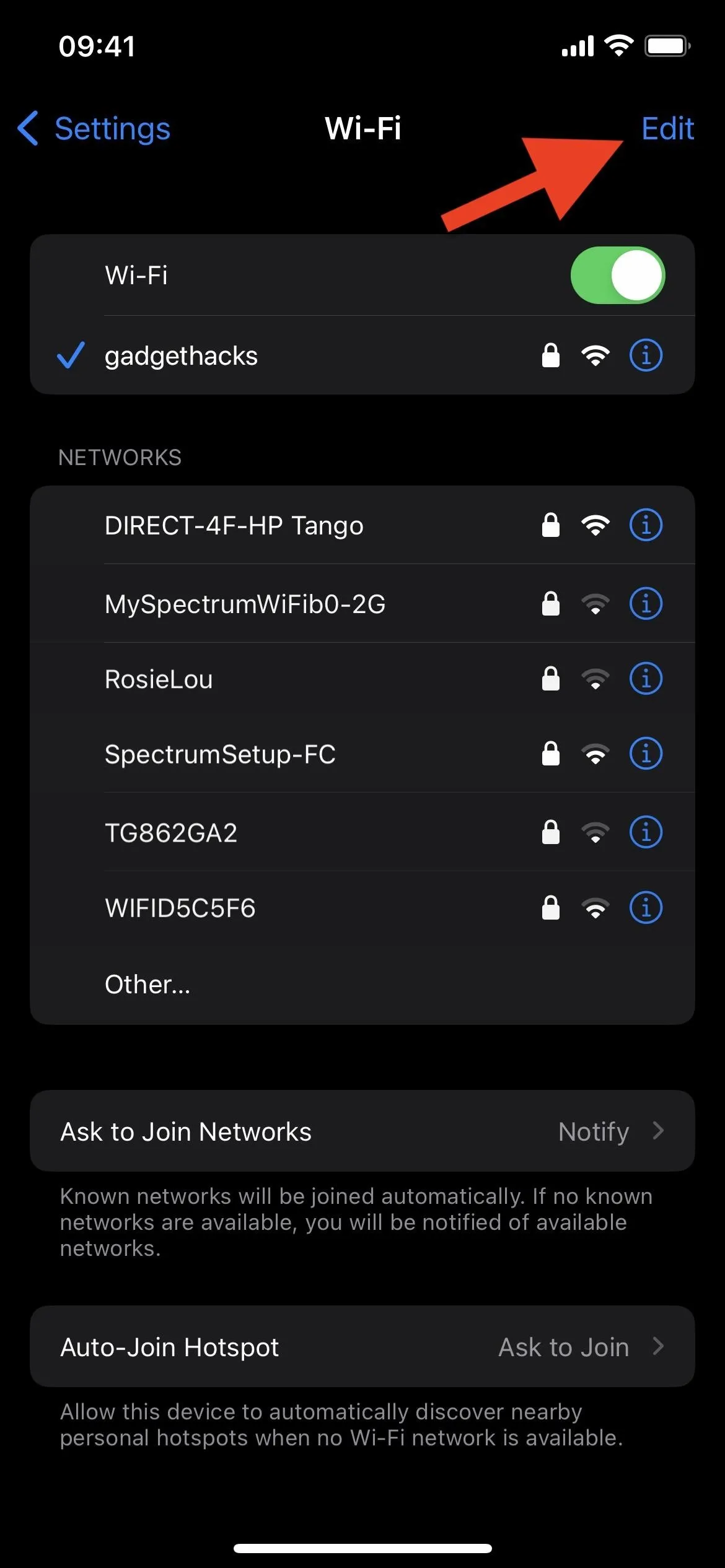
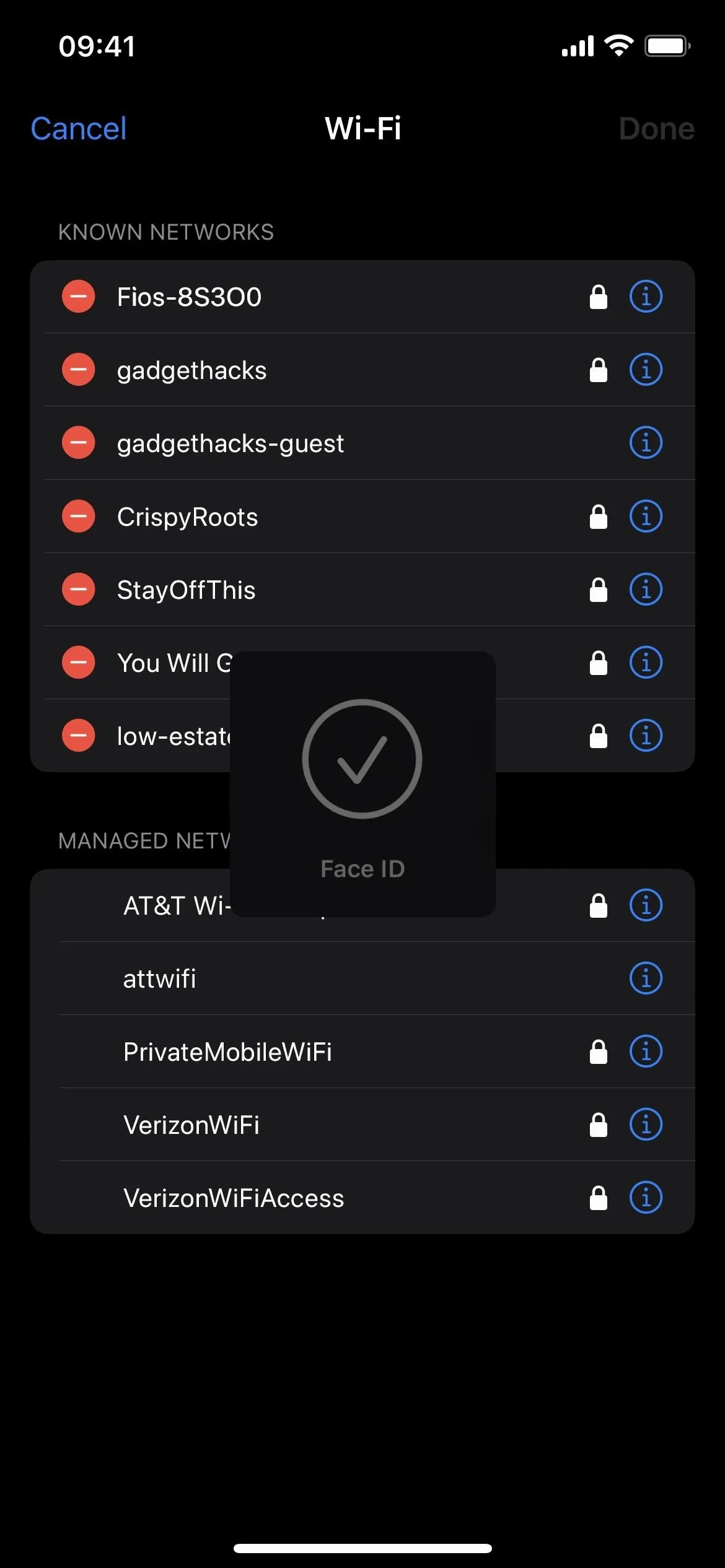




Option 2: Find Your Saved Wi-Fi Passwords in iCloud Keychain
If you're still running iOS 15 or earlier software, it's not as easy as in iOS 16 since you won't see any passwords in your Wi-Fi settings.
You can prepare ahead of time by recording the plain text password of Wi-Fi networks you join so that you can quickly view or share it at a later time. And in Settings –> Passwords, you can manually add a new network as a "site" to record its credentials, but you have to do that every time you join a new network for it to be beneficial. Instead, look to your Mac.
A tool in the "Utilities" applications folder on macOS called "Keychain Access" houses all of your stored Wi-Fi network credentials. If you have iCloud Keychain enabled for both your iPhone and Mac, networks and passwords should sync to iCloud. This applies to older iOS versions as well as the latest iOS 16.
Open the Keychain Access app, then ensure "iCloud" is selected in the sidebar under Default Keychains. If you connected your Mac to the network before iCloud Keychain was enabled, you could also try "System" under System Keychains.
From the tabs, choose "Passwords" to weed out secure notes, certificates, and other data, then sort the results by "Kind" and look for the Wi-Fi network tagged "AirPort network password." You could also use the search bar to find the hotspot by name.

Select the network you need, then hit Return (or Enter) on your keyboard or double-left-click the network with your mouse. From the pop-up, check the box next to "Show password."

Next, enter your keychain password to unhide the plain text password. Your keychain password is likely the same password you use for your macOS user account.

The password for the Wi-Fi network should reveal itself when you authenticate the request, and you can copy and paste it from there.
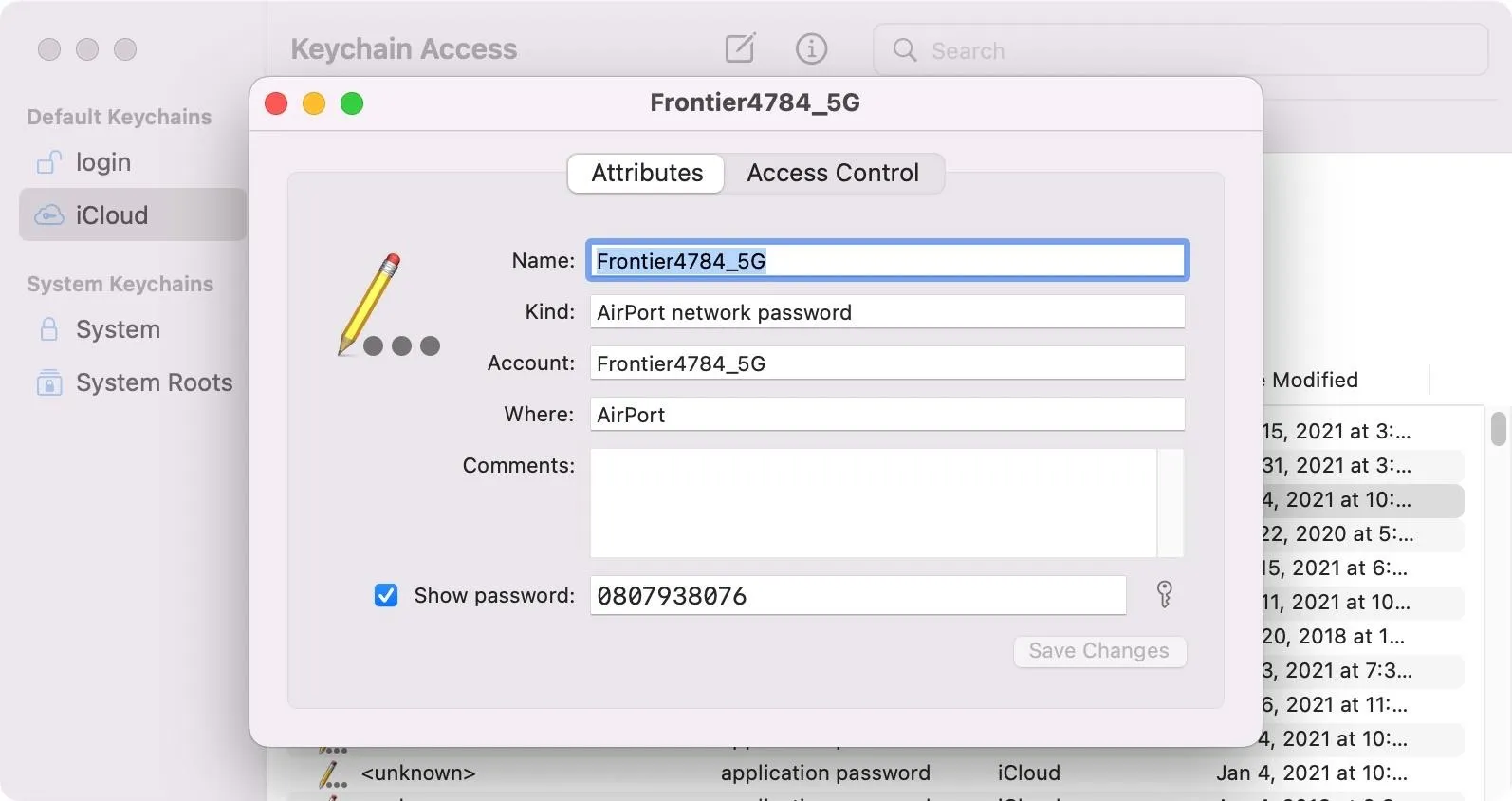
Suppose you want to immediately copy the password to your clipboard so you can paste it into a text message, email, or whatever. You can select the network from the list in Keychain Access and use the Shift-Command-C keyboard shortcut or go to Edit –> Copy Password to Clipboard in the menu bar to copy it.
What if You Couldn't Locate Your Wi-Fi Password?
If you checked Keychain Access on your Mac or the Wi-Fi settings on iOS 16 but couldn't find the Wi-Fi password you need, you may not be syncing Wi-Fi passwords with iCloud. You'll want to enable it for all your iCloud-connected Apple devices for the smoothest experience.
Go to Settings –> Apple ID –> iCloud –> Keychain on your iPhone and make sure "iCloud Keychain" is switched on. From then on, all the passwords you enter and save for Wi-Fi hotspots on the devices will sync to your other Apple devices.
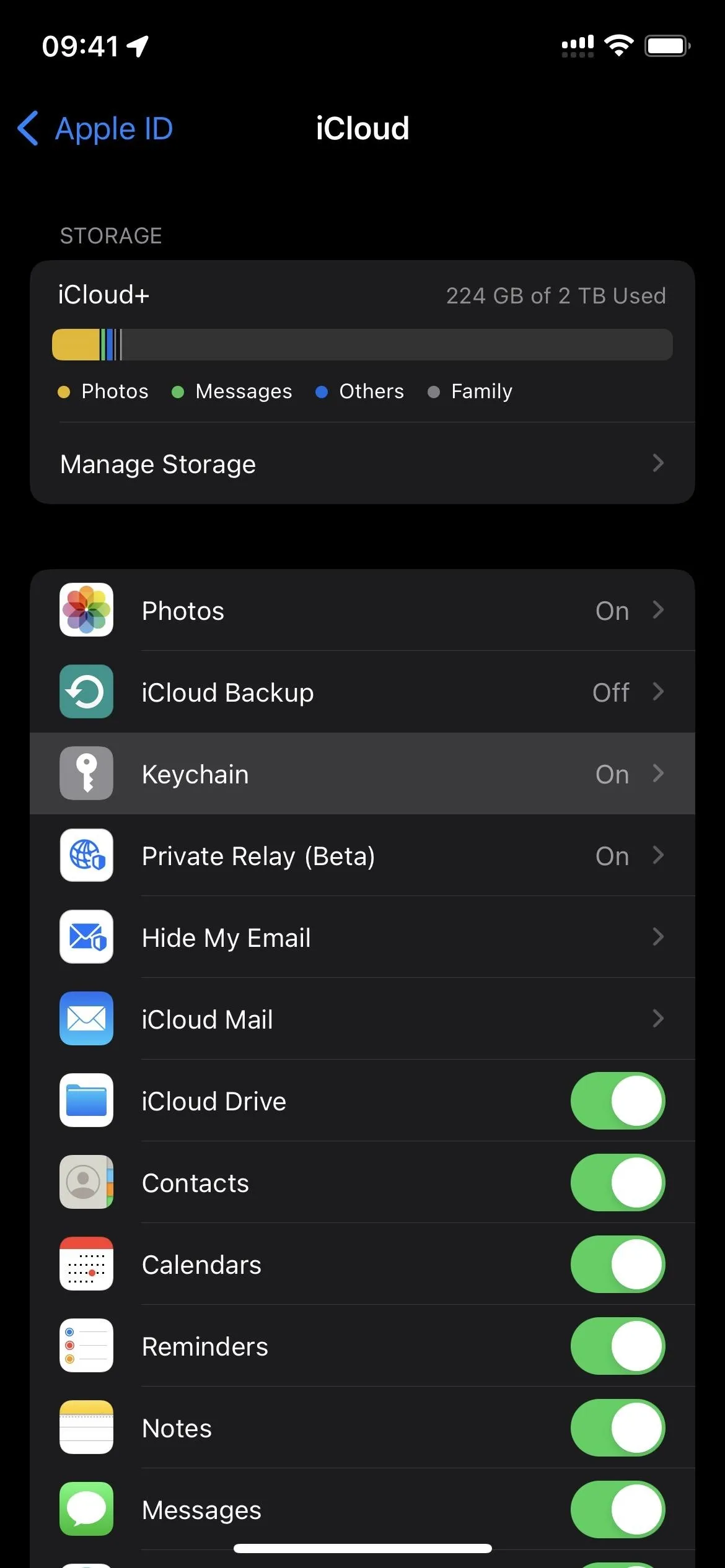



On macOS, go to System Preferences –> Apple ID –> iCloud, then make sure "Keychain" is checked from the list.
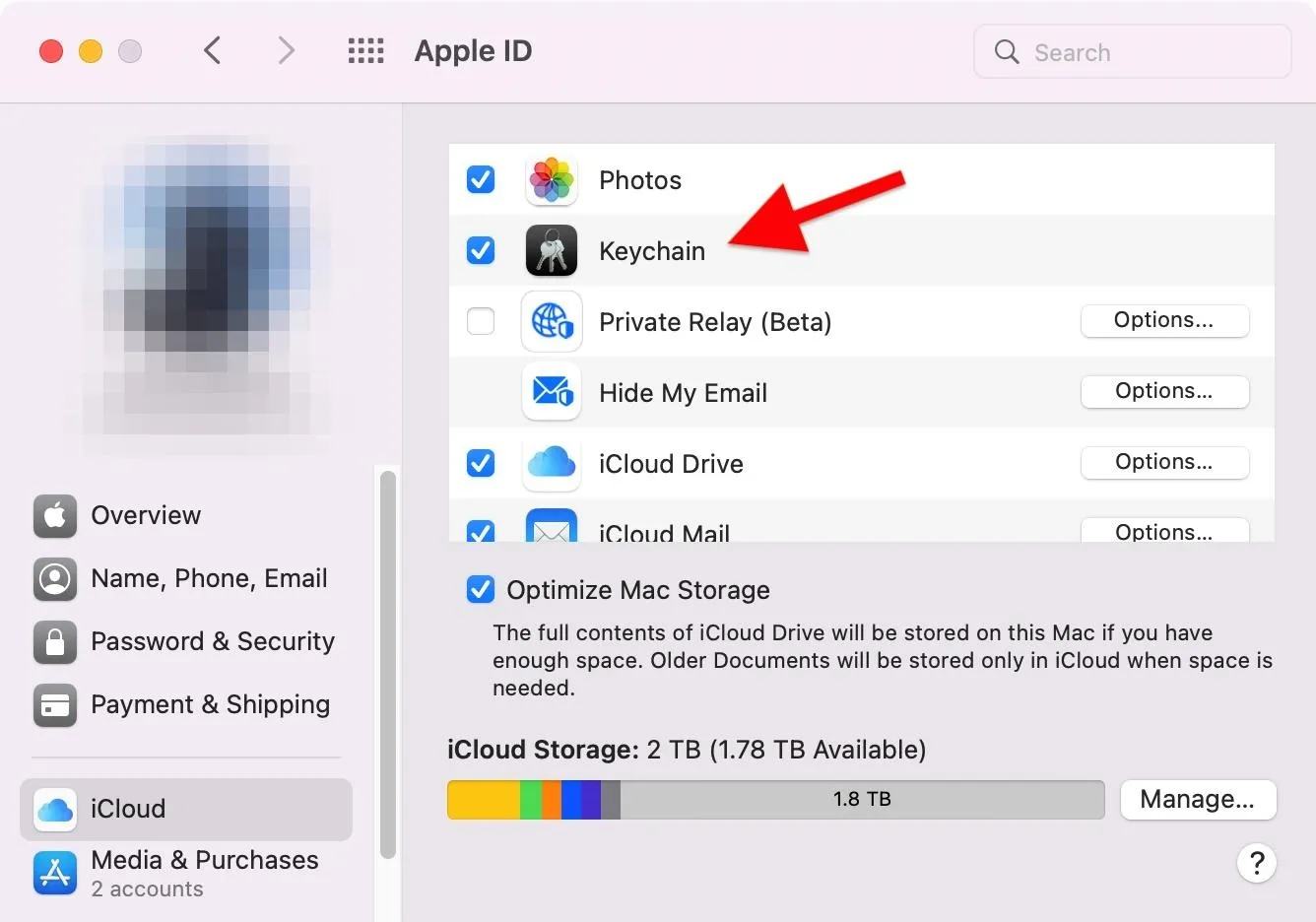
Are There Other Ways to Find Saved Wi-Fi Passwords?
Using iOS 16's new Wi-Fi settings is the most convenient option to retrieve plain text passwords for saved Wi-Fi networks on your iPhone. Checking out Keychain Access is the next best option, even though you need to use a computer. However, if it's your own Wi-Fi network you're trying to find the password for, you can use the app for your wireless router.
For example, I have an AmpliFi Mesh Wi-Fi System, and I can go to wireless settings for the router in the AmpliFi app and toggle on "Show Password" to reveal it.

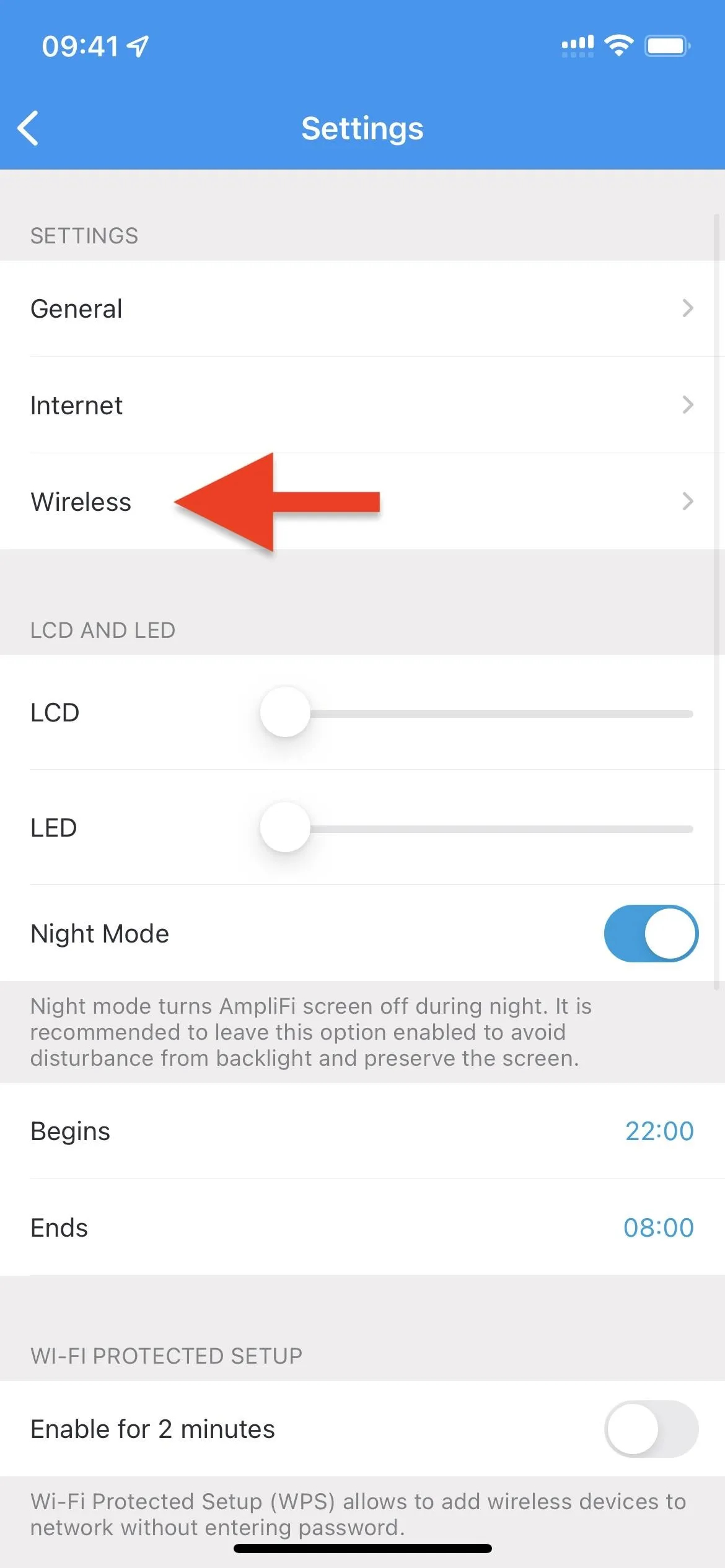
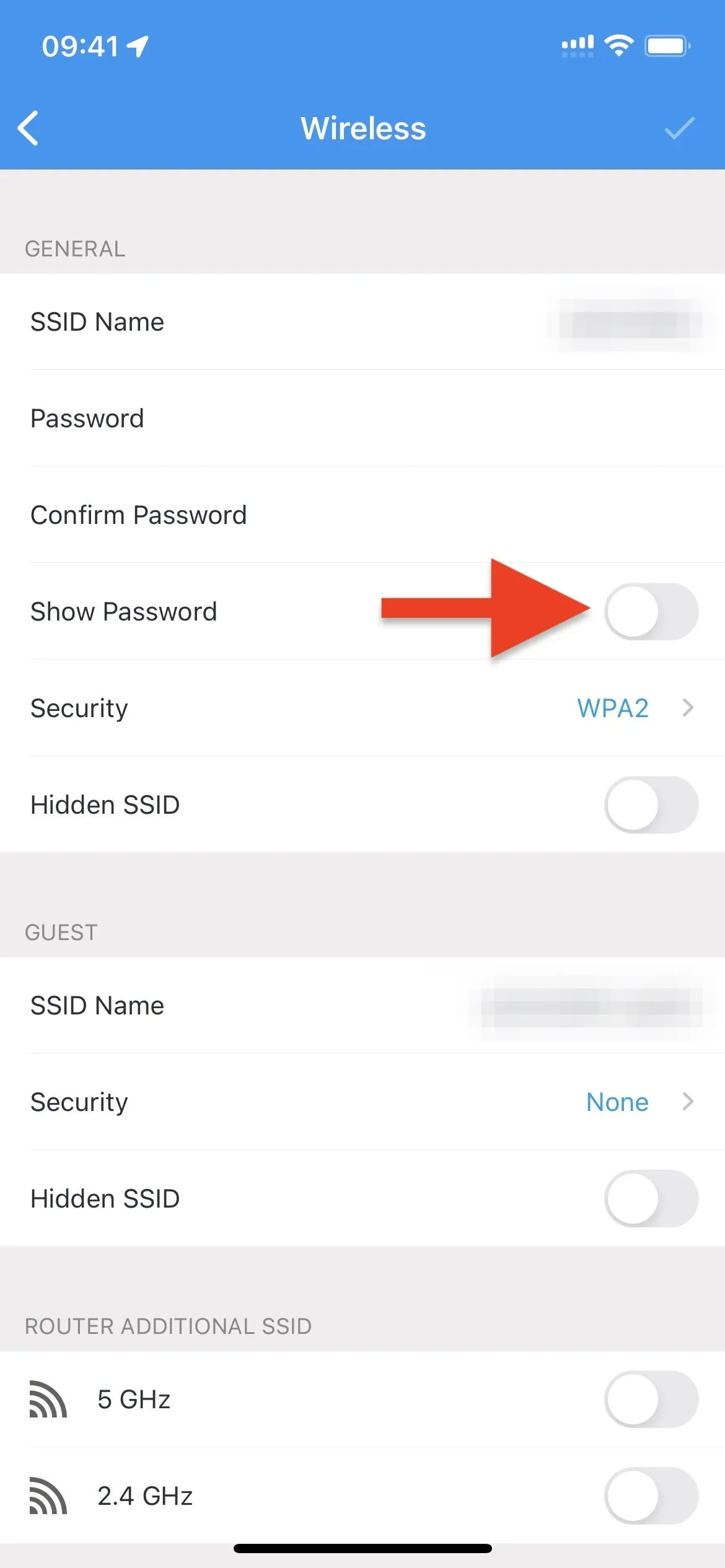



If you don't have an app for your wireless router, you can go to Settings –> Wi-Fi, tap the (i) button next to your network's name, long-press the "Router" line, and hit "Copy." Note that this only works when you're currently connected to the network your trying to get the router IP address for.
Then, navigate to the copied IP address in Safari or another web browser and follow the prompts to log in to your router with your account credentials. If you never reset your router's default username and password, you can try some of the default combinations for your model from Routers Login's list of default passwords.
When signed in to your Wi-Fi router, you should be able to navigate to the wireless settings to view your network's current password.
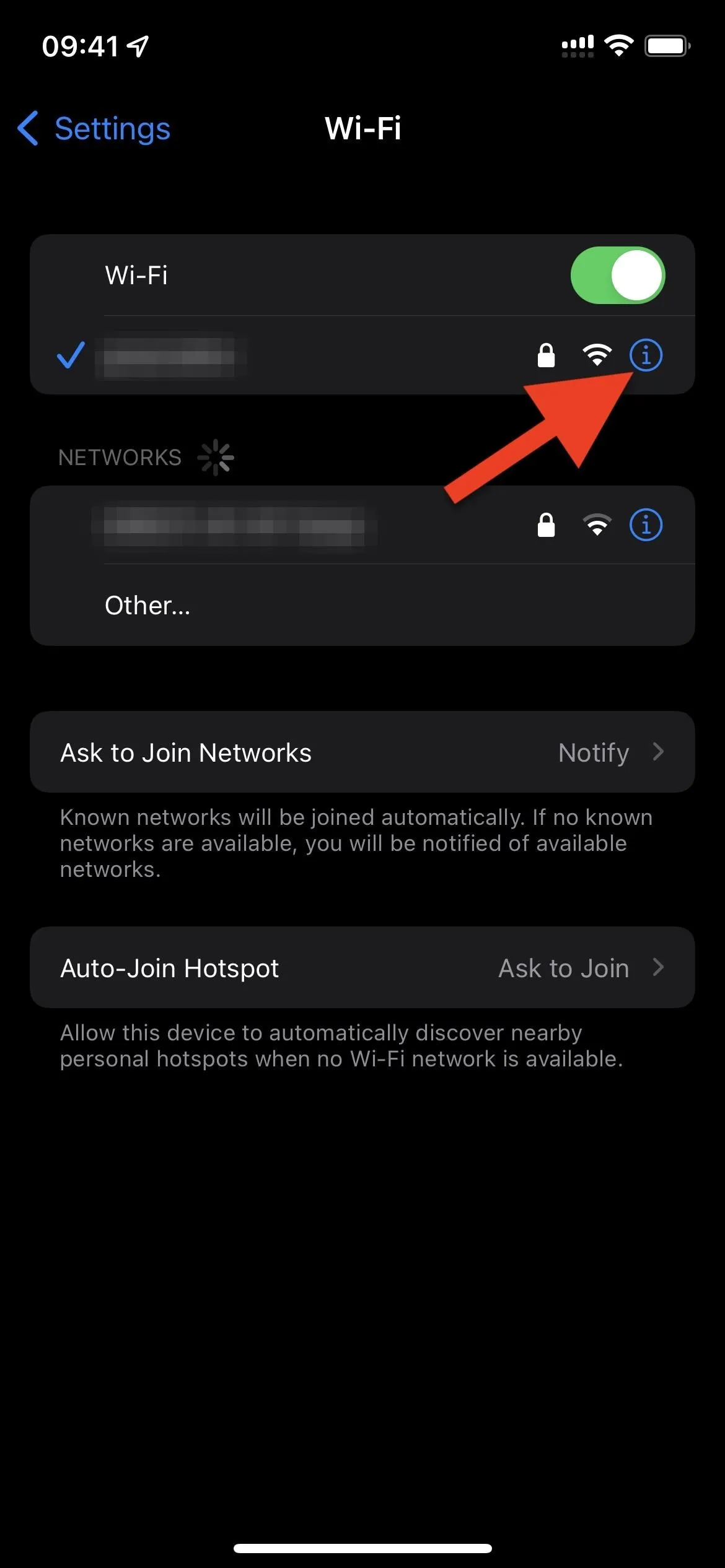





If you do not own the Wi-Fi network you need to locate the plain text password for, there's not much you can do if you can't retrieve it from iOS 16's new Wi-Fi settings or your Mac's Keychain Access app aside from asking the hotspot's owner for the password. That is unless you're a hacker.
While likely illegal, you could gain access to a Wi-Fi network's credentials using white-hat tools like Wifiphisher, Bettercap, Wifite2, Hashcat, Airgeddon, Besside-ng, Fluxion, USB dead drops, and even birthday cards. Of course, you'll also need a computer for most of these hacking tools.
Cover photo and screenshots by Justin Meyers/Gadget Hacks




Comments
No Comments Exist
Be the first, drop a comment!